The Impact of Robotic-Assisted Surgery in Ophthalmology
Are you curious about the impact of robotic-assisted surgery in ophthalmology? This blog will explore the potential benefits, challenges, types, patient experiences, and costs of robotic-assisted surgery in ophthalmology. We will look at how robotic-assisted surgery has revolutionized the field of ophthalmology and how it can potentially help improve patient outcomes. We will also talk about the possible drawbacks and expenses of this technology. Finally, we will examine some patient experiences with robotic-assisted surgery in ophthalmology. By the end of this blog, you will better understand robotic-assisted surgery in ophthalmology and how it can potentially benefit patients.
Benefits of Robotic-Assisted Surgery in Ophthalmology
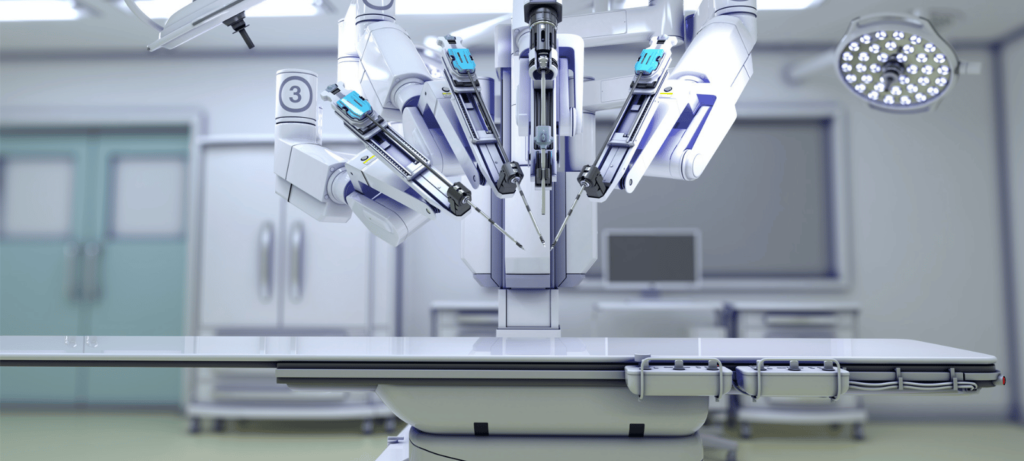
Robotic-assisted surgery in ophthalmology offers numerous benefits over traditional surgical methods. The most obvious advantage is improved precision and accuracy, as robotic arms can make exact and delicate movements that are difficult to achieve with the human hand. This results in a more precise and successful outcome for the patient. Additionally, robotic-assisted surgery is less invasive, which results in less discomfort for the patient and a quicker recovery.
The use of robotics also reduces the risk of human error, as the robotic arms are programmed to follow a specific procedure and are not subject to the same risks of fatigue or distraction that a human surgeon might be.
How does it compare to traditional surgery?:
Robotic-assisted surgery is a more precise and accurate form of surgery than traditional methods. The robotic arms can make tiny and precise movements that would be difficult to achieve with the human hand. In addition, robotic-assisted surgery is characterized by less invasiveness, resulting in diminished patient discomfort and expedited recovery. The use of robotics also reduces the risk of human error, as the robotic arms are programmed to follow a specific procedure and are not subject to the same risks of fatigue or distraction that a human surgeon might be.
What are the potential outcomes?:
The potential outcomes of robotic-assisted surgery in ophthalmology depend highly on the specific procedure. Generally, robotic-assisted surgery is more precise and accurate than traditional methods, resulting in a more successful outcome for the patient. Moreover, robotic-assisted surgery is characterized by its less invasive nature, resulting in reduced patient discomfort and expedited recovery periods. The use of robotics also reduces the risk of human error, as the robotic arms are programmed to follow a specific procedure and are not subject to the same risks of fatigue or distraction that a human surgeon might be.
Challenges of Robotic-Assisted Surgery in Ophthalmology
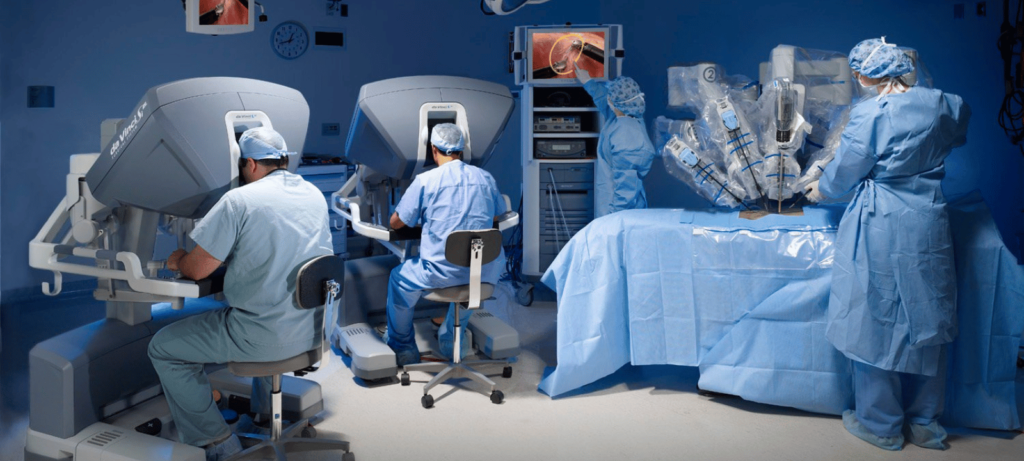
Robotic-assisted surgery in ophthalmology is a relatively new field, and with new technology comes new challenges. One of the foremost obstacles lies in the financial implications associated with adopting this technology, rendering it inaccessible for many patients. Additionally, the complexity of the technology can make it difficult for surgeons to become proficient in its use. There are also risks associated with robotic-assisted surgery, including the potential for complications due to the robot’s lack of tactile feedback. Finally, there are limitations to the types of surgeries that can be performed with robotic-assisted technology.
What are the Challenges Associated with this Type of Surgery?
The primary challenge associated with robotic-assisted surgery in ophthalmology is the cost of the technology. Robotic-assisted surgery requires a significant investment in equipment, and this cost is often passed on to the patient. Additionally, the complexity of the technology can make it difficult for surgeons to become proficient in its use, leading to a steep learning curve.
What are the Risks?
Robotic-assisted surgery carries some risks, including the potential for complications due to the robot’s lack of tactile feedback. Additionally, the accuracy of the robotic-assisted surgery depends on the accuracy of the imaging technology used to guide the robot. Finally, there is the potential for human error, as the surgeon is still responsible for the overall outcome of the procedure.
What are the Limitations?
Robotic-assisted surgery is limited to specific procedures and unsuitable for all ophthalmologic surgeries. The technology must still be advanced enough to allow for more complex procedures, such as those involving the retina or vitreous. Finally, the cost of the technology can be prohibitive for some patients.
Types of Robotic-Assisted Surgeries in Ophthalmology
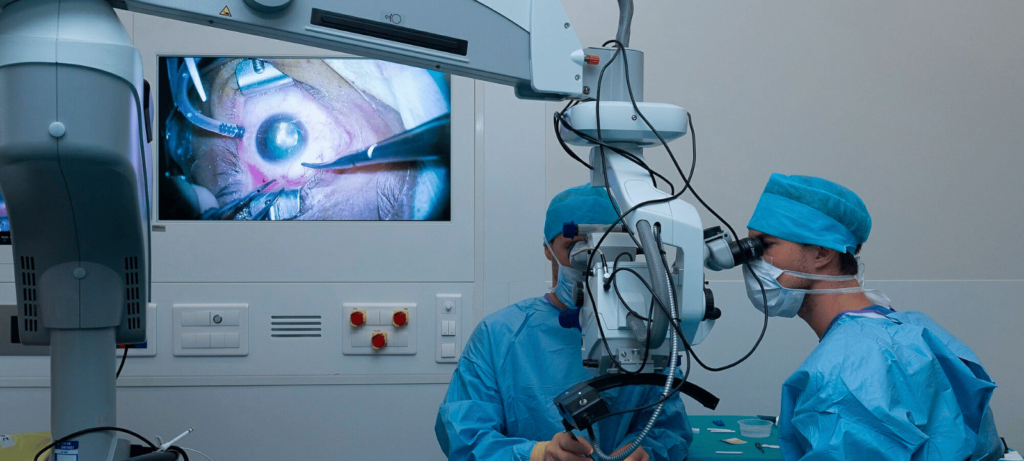
Robotic-assisted surgery in ophthalmology is an advanced technology that has revolutionized eye surgeries. It enables surgeons to perform complex procedures with greater accuracy and precision while reducing the risks associated with traditional open surgeries. Robotic-assisted surgeries can be divided into three main categories: refractive, cataract, and glaucoma.
Refractive Surgery: Refractive surgery is the most common robotic-assisted surgery in ophthalmology. This optical device is used to rectify visual impairments, including myopia, hyperopia, and astigmatism. The surgical procedure in question entails the alteration of the corneal structure to rectify visual impairments.
Robotic Assistance: This is used in cataract surgery, a surgical intervention to remove cataracts. Cataracts refer to the opacification of the ocular lens, leading to visual impairments. In the context of cataract surgery, robotic technology is employed by the surgeon to extract the cataract and implant an artificial lens afterward.
Surgery for glaucoma: Glaucoma is an eye condition that, if unchecked, may lead to visual loss. Reducing ocular pressure during robotic-assisted glaucoma surgery may help stop additional vision loss. The physician performs this kind of surgery by inserting a stent via a series of small incisions made in the eye using robotic equipment. The stent aids in lowering ocular pressure, which may aid in maintaining eyesight.
What are the differences between them?
The main difference between the three types of robotic-assisted surgeries is the type of procedure being performed. Vision issues are treated with refractive surgery, cataracts are removed, and eye pressure is decreased with glaucoma surgery.
What type of surgery is best suited for each patient?
The type of robotic-assisted surgery best suited for each patient will depend on the individual’s vision problem and overall health. Patients with nearsightedness, for instance, could benefit from refractive surgery, whereas those with glaucoma might benefit from glaucoma surgery. An ophthalmologist must be consulted to ascertain which robotic-assisted surgery is most appropriate for each patient.
Patient Experiences with Robotic-Assisted Surgery in Ophthalmology
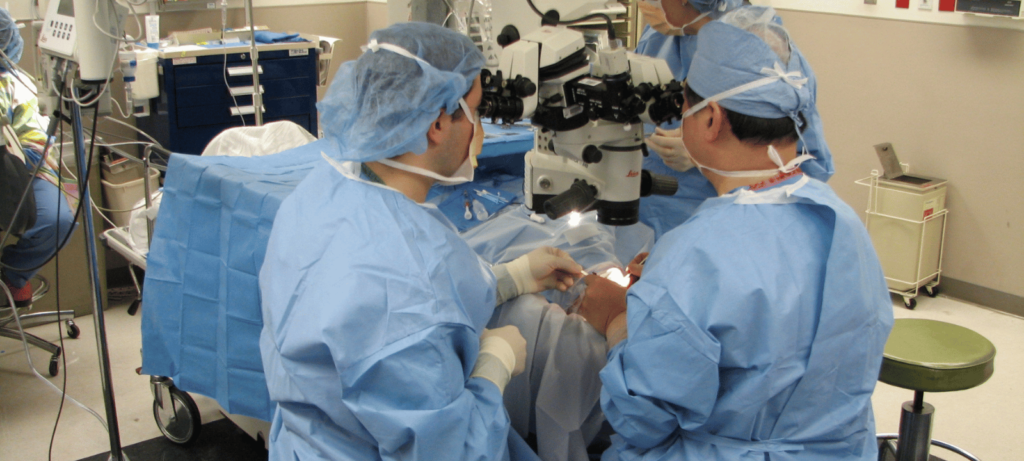
Robotic-assisted surgery has revolutionized the field of ophthalmology, providing patients with a minimally invasive, exact alternative to traditional open surgery. But what is the patient experience like when it comes to robotic-assisted surgery? In this chapter, we’ll explore the recovery times, support available, and overall patient experience of robotic-assisted surgery in ophthalmology.
What is the patient experience like?
Robotic-assisted surgery in ophthalmology is typically a short procedure, with patients often returning home the same day. The surgery is usually painless, as the surgeon controls the robot and the patient is under general anesthesia. The recovery period is also relatively short, with most patients experiencing minimal discomfort and being able to resume their normal activities within a few days.
What are the recovery times?
Recovery timeframes vary based on the procedure and the patient, but most patients may anticipate returning to their regular activities in a few days. For simple procedures like cataract surgery, recovery times may be as short as a day. For more complex procedures, such as retinal surgery, recovery times may be longer, and patients may need to take some time off work or other activities.
What kind of support is available for patients?
Most ophthalmology practices provide comprehensive support to patients before, during, and after robotic-assisted surgery. Patients can expect to receive detailed information about the surgery, including what to expect during and after the procedure. Additionally, patients are typically provided follow-up care, such as post-operative appointments and check-ups, to ensure a successful outcome. Patients may also be able to access support groups or other resources to help them through the recovery process.
Cost of Robotic-Assisted Surgery in Ophthalmology
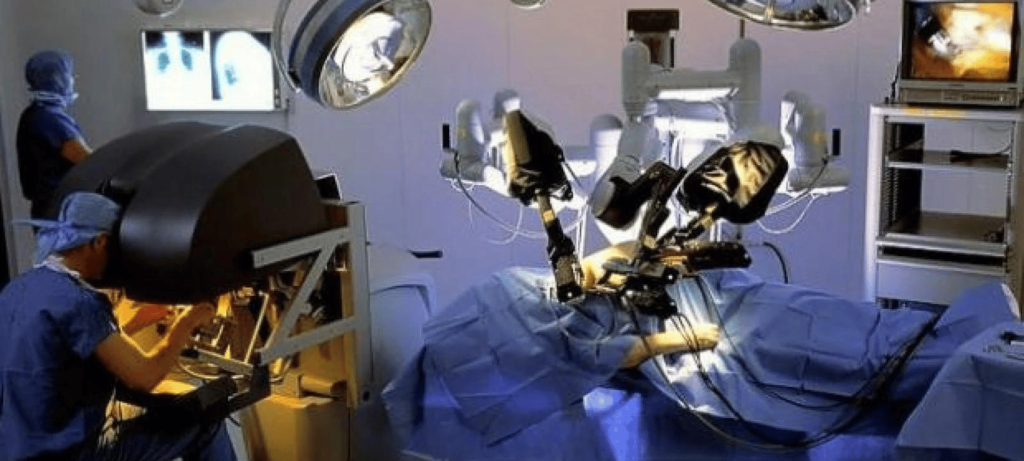
Robotic-assisted surgery in ophthalmology has transformed eye surgery by providing a less intrusive option to conventional methods. However, the cost of robotic-assisted surgery in ophthalmology is often a significant concern for patients. This blog will explore the cost of robotic-assisted surgery in ophthalmology, insurance coverage options, and how it compares to traditional surgery.
What is the cost of robotic-assisted surgery in ophthalmology?
The cost of robotic-assisted surgery in ophthalmology varies depending on the procedure type and the surgery’s location. Generally speaking, robotic-assisted surgery is more expensive than traditional surgery due to the equipment’s cost and the surgeons’ expertise. However, the cost of the procedure is typically offset by the reduced recovery time and the improved results.
Are there any insurance coverage options?
Insurance companies often cover ophthalmology robotic surgery, albeit the extent of the coverage varies per treatment and insurer. It is crucial to determine if your insurance company covers robotic-assisted ophthalmology surgery.
How does it compare to traditional surgery?
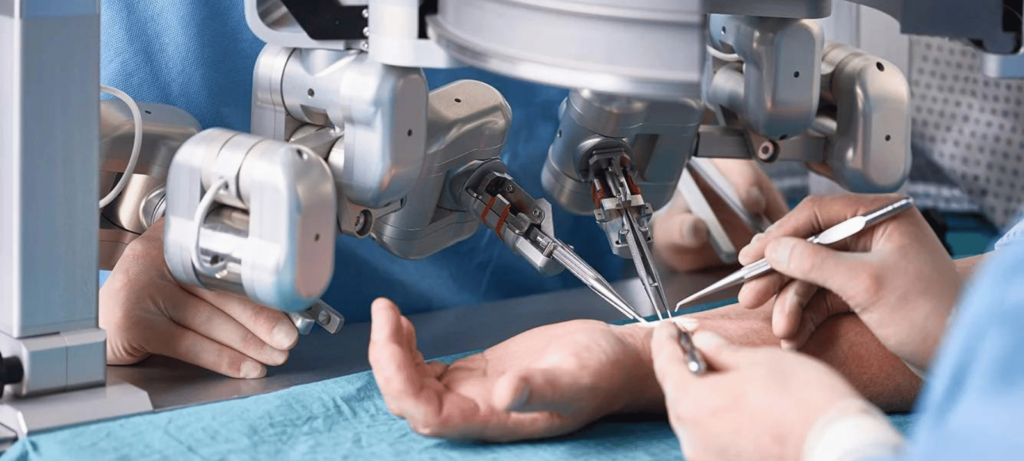
Robotic-assisted surgery in ophthalmology is typically more expensive than traditional surgery. However, it generally offers a shorter recovery time and improved results. Additionally, robotic-assisted surgery is minimally invasive, meaning the patient experiences less pain and discomfort.
Overall, robotic-assisted surgery in ophthalmology is a cost-effective and safe alternative to traditional surgery. While the procedure cost may be higher than traditional surgery, the benefits of robotic-assisted surgery often outweigh the additional cost.
Conclusion
In conclusion, integrating robotic-assisted surgery into ophthalmology has marked a significant advancement in the field, and Sasco Hill Surgery Center is at the forefront of this transformative technology. Its benefits, such as enhanced precision, reduced complications, precise incisions, shorter recovery times, and improved patient satisfaction, cannot be understated. However, acknowledging the challenges, including the initial cost and the ongoing need for research and development, is essential.
As Sasco Hill Surgery Center continues to embrace robotic-assisted surgery, this technology has great potential to become a standard of care in ophthalmic surgery. With ongoing dedication to innovation and resource investment, Sasco Hill Surgery Center is poised to make these advanced procedures more accessible to patients. The future of ophthalmology holds promise, and through the continued evolution of robotic-assisted surgery, more individuals can look forward to improved outcomes and exceptional patient experiences.
